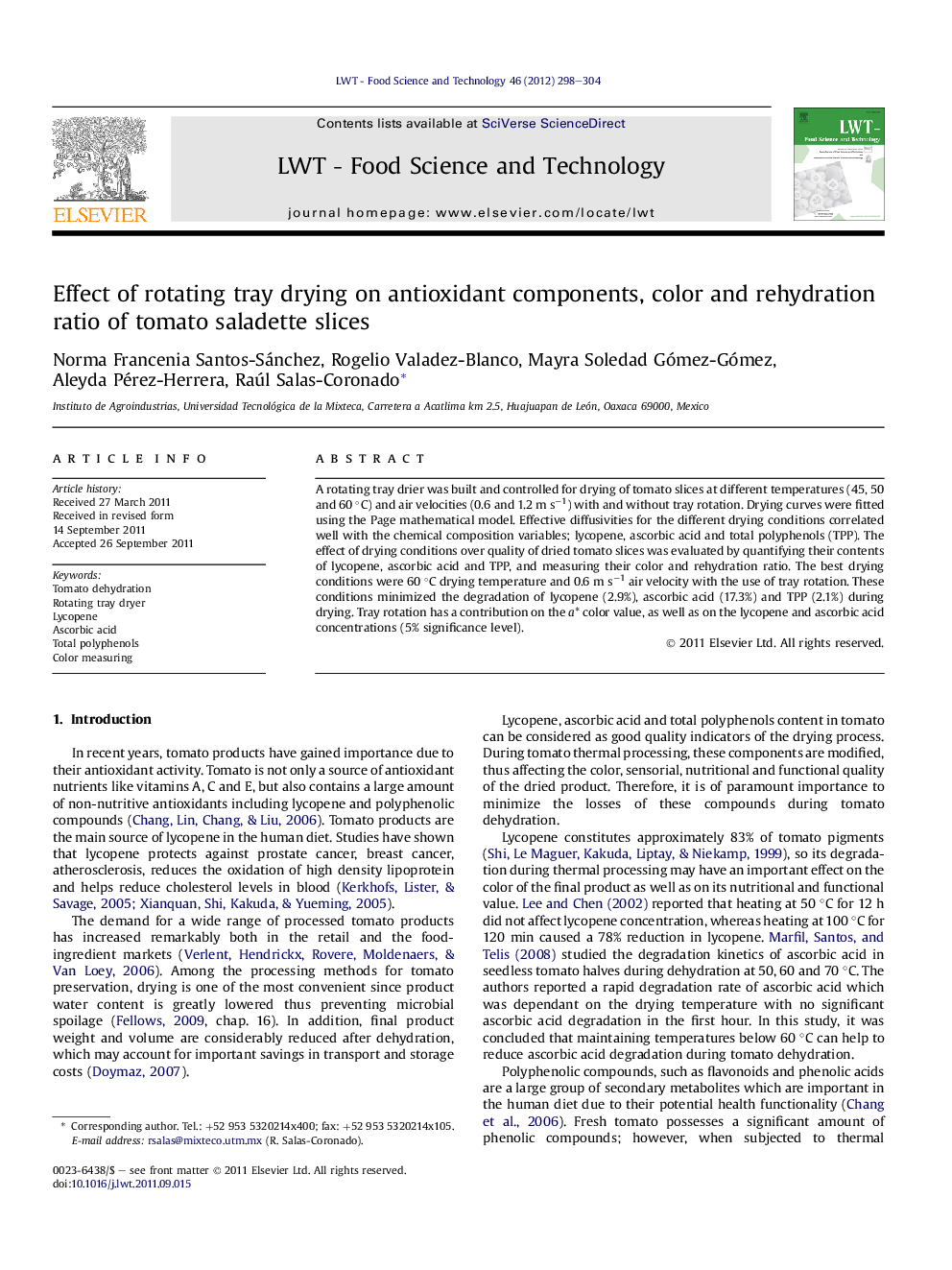| Article ID | Journal | Published Year | Pages | File Type |
|---|---|---|---|---|
| 6405445 | LWT - Food Science and Technology | 2012 | 7 Pages |
A rotating tray drier was built and controlled for drying of tomato slices at different temperatures (45, 50 and 60 °C) and air velocities (0.6 and 1.2 m sâ1) with and without tray rotation. Drying curves were fitted using the Page mathematical model. Effective diffusivities for the different drying conditions correlated well with the chemical composition variables; lycopene, ascorbic acid and total polyphenols (TPP). The effect of drying conditions over quality of dried tomato slices was evaluated by quantifying their contents of lycopene, ascorbic acid and TPP, and measuring their color and rehydration ratio. The best drying conditions were 60 °C drying temperature and 0.6 m sâ1 air velocity with the use of tray rotation. These conditions minimized the degradation of lycopene (2.9%), ascorbic acid (17.3%) and TPP (2.1%) during drying. Tray rotation has a contribution on the a* color value, as well as on the lycopene and ascorbic acid concentrations (5% significance level).
⺠We study the effect of different drying conditions on tomato drying quality. ⺠The effect of tray rotation, temperature and air velocity was investigated. ⺠Chemical composition and color values were used to assess dried product quality. ⺠Tray rotation increases drying rates thus improving dried product quality. ⺠Color, lycopene and ascorbic acid were good quality indicators of the drying process.
